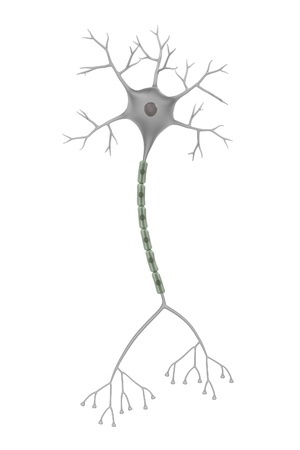For a long time it was believed that once we leave childhood, our brain will cease to change shape in any notable way. While we can form new memories and ideas, the state of the brain is ‘set’ making it much harder for us to change persistent patterns and learn new languages or ways of moving.
This was a popular belief, but in the last decade more recent research (such as this study on ‘arm training’ in stroke patients) has taught us that this just isn’t true. Not only can the brain change shape in profound ways even in adulthood, but it’s even capable of birthing new neurons (neurogenesis). This is not only possible, but common and is what we now call ‘brain plasticity’ or ‘neuroplasticity’.
The Implications of Neuroplasticity
 So what does this mean? Well essentially it means that if you were to lose your eyesight today, your brain would be able to adapt by changing shape thus giving you enhanced hearing. Likewise if you were to learn a new task – such as playing the cello – your brain would be able to change shape in order to support the new skills.
So what does this mean? Well essentially it means that if you were to lose your eyesight today, your brain would be able to adapt by changing shape thus giving you enhanced hearing. Likewise if you were to learn a new task – such as playing the cello – your brain would be able to change shape in order to support the new skills.
How does this work?
Whenever we form a memory, have an idea, or try something new, we will create a new neuronal connection in the brain – in other words the brain will subtly change shape to create a new chain of neurons. As we do this, blood flow to the regions involved will increase. This then heightens the excitability of the neurons that are located in the vicinity as they are supplied with more oxygen. Like a muscle, this can then cause the neurons in that vicinity to slightly strengthen each time they’re used, which in turn makes it increasingly easy for the neurons to fire. This is what habits are: pathways of neurons that have fire over and over again to the point where they almost fire automatically without our input (for better or for worse). That’s why we’ll often accidentally drive to our old house the minute we stop thinking, or why it’s so difficult to stop picking our nose.
Over time, if we don’t use those particular neural pathways then they will atrophy to the point where they are no longer going to fire accidentally. On the other hand, if we repeatedly practice a new task it will more and more begin to become ‘second nature’. Eventually this can lead to whole areas of the brain being physically larger and heavier than others.
While neuroplasticity is less flexible as we get older, there is more and more evidence showing that it still very much takes place and can be used to help us develop new skills and recover from injuries and problems that would otherwise leave us out of action. This is a true biological support for the idea that we can achieve anything we put our mind to… quite literally!



